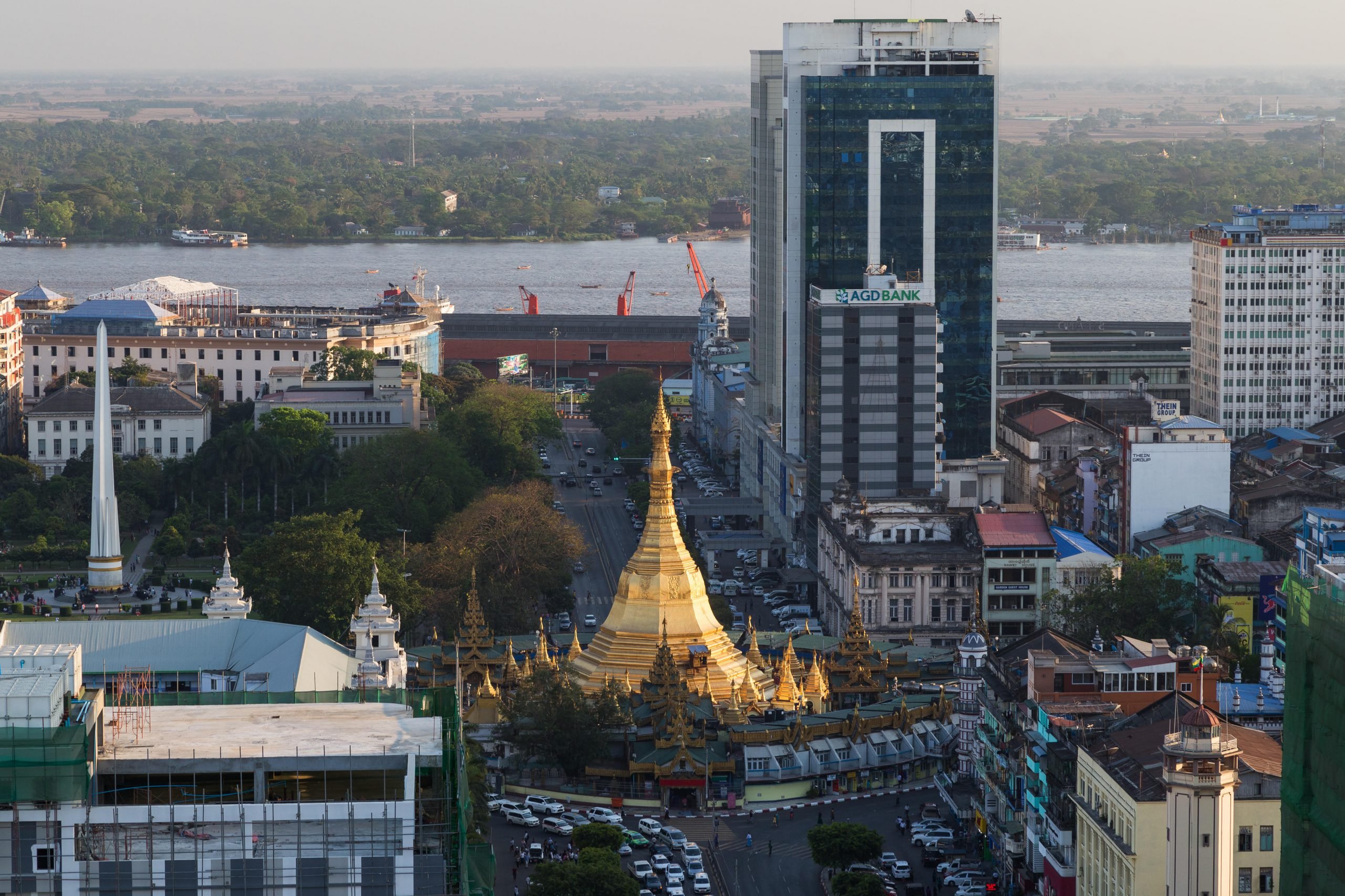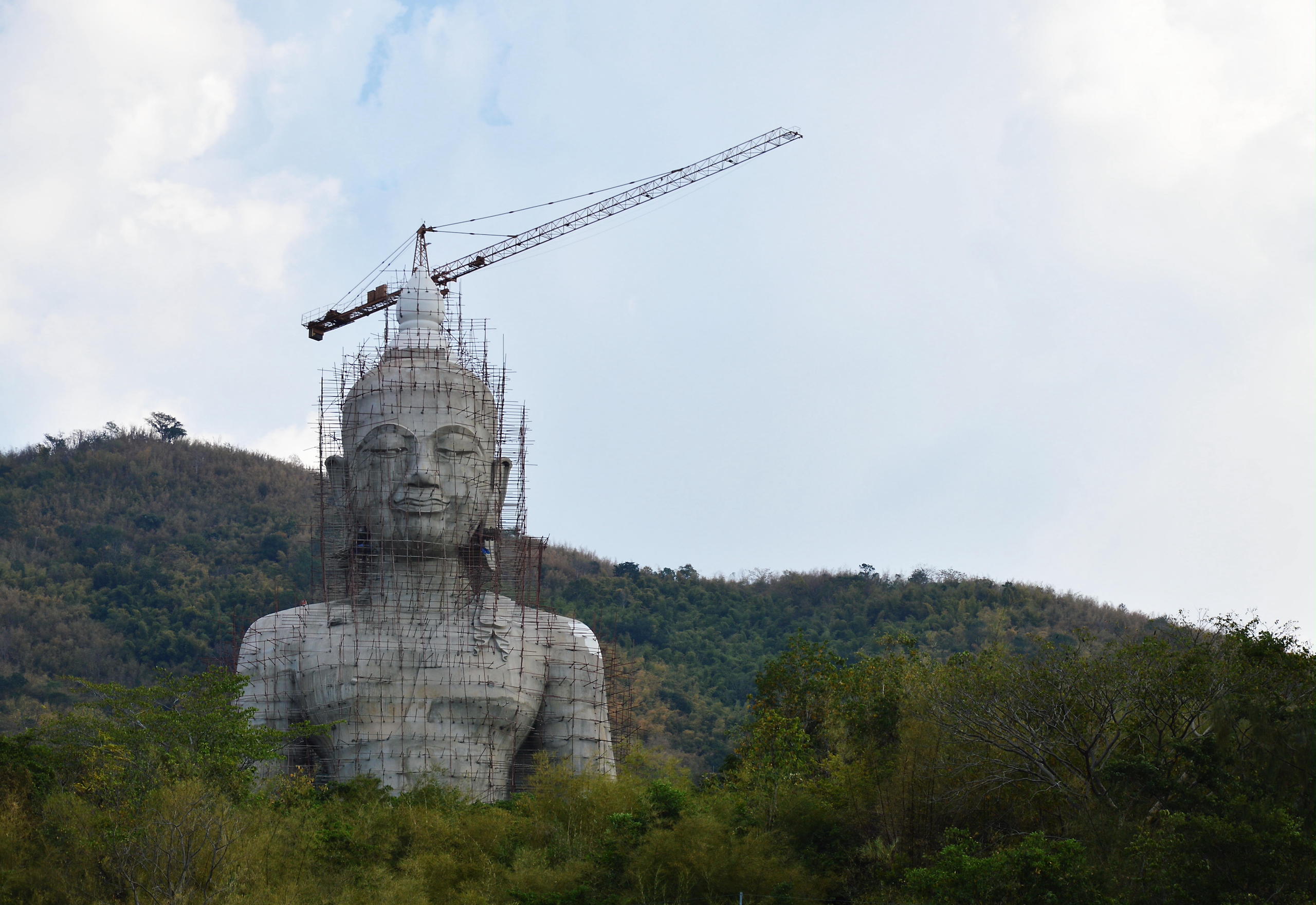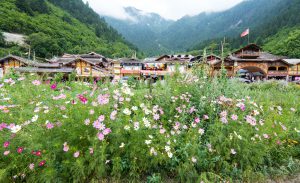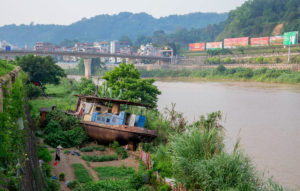In 707 CE, an official of China’s Tang dynasty observed that: “Extensive constructions of [Buddhist] monasteries are undertaken, and large mansions are built. Even though for such works trees are felled to the point of stripping the mountain, it does not suffice to supply all the beams and all the columns required, [so more are imported]. Though earth is moved to the point of obstructing the roads, it does not suffice for the [production of bricks required for] walls and partitions.” Extracting wood to build monasteries deforested wide areas; acquiring earth for bricks and other building materials altered the landscape. As large and powerful economic units, Buddhist institutions impelled large-scale environmental change.
This example from medieval China illustrates the central point of Johan Elverskog’s provocative book The Buddha’s Footprint: An environmental history of Asia, which he also summarises in the form of a tweet: “Elverskog overturns eco-Buddhism narrative by showing how Buddhists across Asia transformed the environment by commodification, agro-expansion, and urbanization”. The eco-Buddhism narrative refers to the widespread, yet mistaken, idea that Buddhism was a tradition of renunciation that espoused something akin to modern environmental sensibilities.
In opposition to the popular image of eco-Buddhism, Elverskog argues that ecological awareness and protection of nature were not inherent to the Buddhist tradition. On the contrary, “the pro-development, expansionist, protocapitalist economy of early Buddhism entailed the antithesis of an environmental ethos, and little about it changed as Buddhism spread across the world”. Driven by beliefs that justified and even encouraged the exploitation of the natural world, Buddhists continually expanded the “commodity frontier,” a term Elverskog uses to refer to the processes that extracted natural resources and transformed them into commodities in support of the Dharma.
Economic expansion was intrinsic to the architecture of the whole system in every Buddhist tradition
The trouble with the eco-Buddhism narrative, Elverskog explains, is that it distorts Buddhist ideas and ignores what Buddhists did. To set the record straight, the first part of the book offers a myth-busting overview of Buddha’s teachings. Having resonated with the merchant classes of early India and flourished in the urban world of trade that spanned across Asia, Buddhism was not centred on renunciation and anti-materialism. The Buddha did not even advocate vegetarianism; the idea that monks should be vegetarian developed a thousand years later in China.
According to Elverskog, Buddhism was a “prosperity theology” centred on the generation of wealth. Making money was a fundamental part of being Buddhist. Producing wealth created positive karma; using that wealth to support the Dharma increased merit. Even if monks renounced the material world and refrained from killing animals, most Buddhists did not. Thus, as Elverskog points out: “In order to fully appreciate the ‘footprint’ of the Buddhist tradition – and the history of Buddhist Asia – the activities of the lay community need to be brought to the front and centre of our analyses”.
For Buddhism to function properly, lay people had to support monks. That practice of giving required an economic surplus. When some among the laity got rich by participating in worldly endeavours, their wealth supported monastics and thereby generated merit. “Because of that, economic expansion was intrinsic to the architecture of the whole system in every Buddhist tradition – Nikaya, Mahayana, and Tantric Buddhism”. Not surprisingly, he argues, Buddhism idealised people who “had the wherewithal and business acumen to transform the riches of the natural world into material wealth, which could in turn be transformed into both karmic and cultural capital”. Because wealth was acquired through the extraction and exploitation of nature, Buddhists were a driving force in the environmental history of Asia.

Aesthetic appreciation of nature in East Asian Buddhism derived from a longing for undisturbed environments that had long since disappeared. It also required wealth, “because, in the pre-modern period, only those with the means could appreciate and aestheticise nature”. Appreciation of nature in Chinese and Japanese Buddhism had less to do with an environmental ethos and more to do with maintenance of status. As the preserve of elites, writing nature poetry, landscape painting, and other practices that aestheticised nature reinforced status distinctions in the monetised, hierarchical urban economy that Buddhism fostered.
The second part of the book surveys what Buddhists did, showing that Buddhism established and sustained a system that exploited environments as well as people across Asia. Elverskog attributes that exploitation to the moral hierarchy of Buddhism: “The Buddhist theory of merit institutionalised a socially stratified moral hierarchy… As a result, the Buddhist tradition legitimizes a social hierarchy wherein certain groups of people, especially the monastics and the wealthy laity, are not only karmically superior but also justified in exploiting those karmically inferior”. Wherever the Dharma became established, Buddhists brought local resources into global networks of trade. They marginalised indigenous peoples in the process.
Buddhist concern with the environment reflects the influence of modern environmental discourses on Buddhism and not vice versa
Elverskog’s overview of how Buddhists altered the environment of Asia should inspire more in-depth investigations. The most illuminating chapter, in my opinion, examines Buddhism’s role in agricultural expansion. In addition to promoting the spread of advanced irrigation technologies, Buddhists led the way in disseminating four crops – rice, sugar, cotton, and tea – that “changed the environmental history not only of Asia but also of the world”. This “Buddhist exchange”, he writes, “had just as many ‘earth-shattering environmental consequences’ as the transmission of crops and diseases” did in the Columbian exchange between Afro-Eurasia and the Americas that it preceded.
Buddhism thrived in cities like Jiankang (today’s Nanjing), which in the sixth century had a population of well over a million, with 20,000 to 40,000 Buddhist monks and 700 Buddhist temples. Such large urban centres demanded not only extraction of agricultural surplus to feed their denizens, “but also an expansion of the network of Buddhist traders who procured and transported the commodities that made the city function”. Just as importantly, the urbanisation that went hand in hand with the spread of Buddhism also brought about the alienation of humans from nature and a blindness to the environmental consequences of human action. At the same time, Buddhists altered and exploited the environment through the construction of their monasteries, temples and stupas.
Today, as the historian Prasenjit Duara has shown, Buddhism lends inspiration to movements launched by local communities in Asia against environmental degradation. Yet Elverskog concludes that Buddhist concern with the environment is of recent origin. Contemporary interpretations, in his view, “reflect the successful influence of modern environmental discourses on Buddhism and not vice versa”. The radical changes in the relationship between Buddhists and the environment that have occurred in recent decades, along with the invention of the eco-Buddhist “tradition,” have histories that remain to be written.
Read more from China Dialogue’s Environmental History Series








